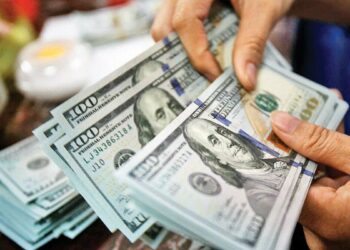Apple Inc. reported its fiscal Q2 earnings on Thursday, with the tech giant’s overall sales falling for the second quarter in a row. However, the company’s net income during the quarter was $24.16 billion, beating Wall Street’s soft expectations, thanks to stronger-than-anticipated iPhone sales. Apple’s shares rose nearly 2% in extended trading, and continued climbing when Apple gave forecast data points about the current quarter.
Apple reported $24.16 billion in net income during the quarter compared to $25.01 billion in the year-earlier period. Total revenue was off 3% from $97.28 billion in the prior quarter.
Apple CEO Tim Cook said the quarter was “better than we expected.” The highlight of Apple’s report was iPhone sales, which grew from the year-ago quarter even as the broader smartphone industry contracted nearly 15% during the same time, according to an IDC estimate. iPhone revenue increased 2% during the quarter that ended April 1, suggesting that parts shortages and supply chain issues that had hampered the product for the last few years had finally abated
On the downside, Apple’s Mac and iPad businesses didn’t fare as well, with the company warning last quarter that both business segments would decline, partially due to parts shortages, but they fell further than expected. Apple’s Mac sales were off more than 31% to just over $7.17 billion, and revenue from iPads declined nearly 13% to $6.67 billion. Apple’s Services business includes monthly subscriptions, revenue from Apple’s App Store, warranties, and search-licensing revenue from companies like Google.
Apple reported $20.9 billion in services revenue, a 5.5% year-over-year increase, signaling the company’s highest-margin business line continues to grow. Apple’s wearables division, including Apple Watch and headphones such as AirPods, dropped 1% during the quarter, beating analyst expectations. Apple’s China regional business, which includes the mainland, Taiwan, and Hong Kong, reported $17.81 billion in sales, down from last year’s $18.34 billion. Analysts had hoped that China’s demand for electronics would rise in the quarter as the company exits out of Covid-era lockdowns and other restrictions. While sales shrunk in most regions that Apple monitors, they grew in the Asia Pacific region to $8.11 billion. Looking ahead, Apple didn’t provide formal guidance, but Apple finance chief Luca Maestri said the company expects overall revenue in the current quarter to decline about 3%. He added that the company is facing macroeconomic challenges in digital advertising and mobile gaming, which is part of Apple’s services business.
Despite this, Apple’s board authorized $90 billion in share repurchases and dividends. Apple said it paid $23 billion in buybacks and dividends in the March quarter. Apple also raised its dividend 4% to 24 cents per share.
Cook was optimistic about Apple’s prospects in India after his visit last month to the country where he opened Apple stores and met with politicians. “The switcher and first-time buyer metrics look very good there for India,” Cook said. Apple uses the term “switcher” to refer to first-time iPhone buyers who previously had Android devices. Finally, Cook also said that Apple was not planning layoffs like those that other big tech companies have started over the past year.
Here’s how the company did versus Wall Street expectations per Refinitiv consensus expectations:
- EPS: $1.52 per share vs. $1.43 expected
- Revenue: $94.84 billion vs. $92.96 billion expected
- Gross margin: 44.3% vs. 44.1% expected
- iPhone revenue: $51.33 billion vs. $48.84 billion expected
- Mac revenue: $7.17 billion vs. $7.80 billion expected
- iPad revenue: $6.67 billion vs. $6.69 billion expected
- Other Products revenue: $8.76 billion vs. $8.43 billion expected
- Services revenue: $20.91 billion vs. $20.97 billion expected










